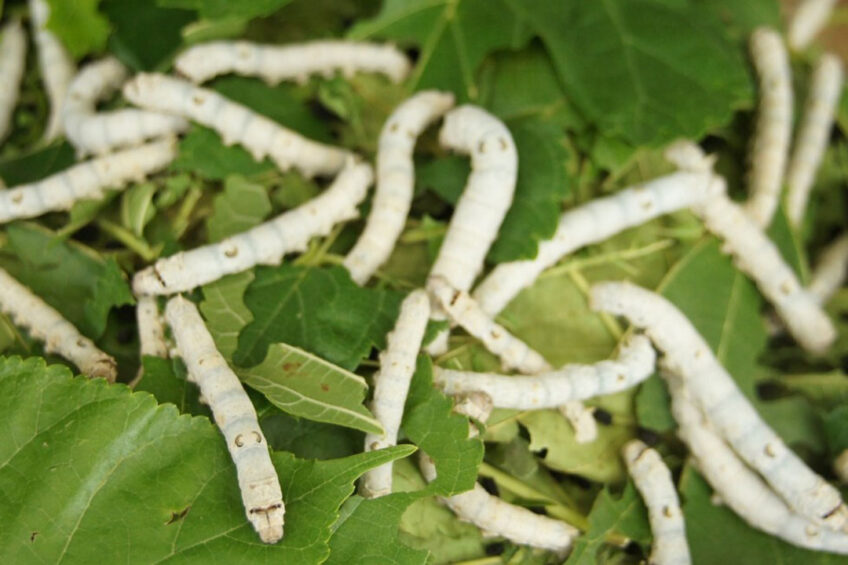Silkworms provide sustainable source of nutrition for broilers

Evidence is growing that defatted silkworm pupa meal can provide a sustainable choice for broilers at different ages of their development.
Silkworm (Bombyx mori) pupae are currently considered a waste product of the silk industry. Still, research has shown that meal made from the pupae had higher protein content than other key alternatives like soyabean meal and fishmeal. It also contains abundant omega-3 fatty acids.
Defatted silkworm meal as feed
Research recently published by Hungarian scientists assessed the effects of 4% defatted silkworm (SWM-DEF) meal, which was incorporated into the diets of chickens at different growth stages. The study looked at growth performances, carcass and meat quality traits.
A total of 90 Ross 308 day-old male broiler chickens were randomly allocated into 3 dietary groups of 5 replicated pens/diet (6 chickens per pen). The control group was fed a standard soybean-based diet (C); group SWM1 consumed a starter diet (1-10 days of age) including 4% SWM-DEF meal up to slaughter (11-42 days). Group SWM2 was fed with the control diet in the starter phase and the 4% SWM-DEF diet up to slaughter.
Individual live weight and pen feed intake were determined at the end of each feeding phase: starter, grower, and finisher. Weight gain and FCR were then calculated. At 42 days of age, chickens were slaughtered, and carcass traits were determined. Leg and breast physicochemical meat quality was also evaluated.
A possible alternative?
The results confirmed that SWM-DEF could be a possible alternative feed source for chickens, as growth performance, carcass, and meat physical traits were overall comparable in the 3 treatment groups. However, the nutritional quality of the birds’ meat was improved by its inclusion at the grower-finisher phase when compared to its use as a starter diet.
“Results of the present study highlighted that carcass, breast and leg yields were not affected by the dietary inclusion of 4% silkworm meal, which is in line with findings of other studies on silkworm meal as a protein source for chickens.
“The same was not always observed when different insect species (black soldier fly, mealworm or house fly) were tested, which might be attributable to different protein quality and/or efficiency of amino acid utilisation,” the authors wrote.
The researchers also saw a greater moisture loss associated with birds fed the silkworm diets, from the breast meat during thawing and leg meat through dripping when suspended.
Looking ahead, they said further investigation should focus on the impact on meat fatty acids profile and sensory traits, which are vital for consumers, ahead of a possible move into the mainstream feeds market.
The report, ‘Dietary Inclusion of Defatted Silkworm Pupa Meal for Broiler Chickens at Different Ages: Growth Performance, Carcass and Meat Quality Traits’ was published in the journal Animals.
Join 31,000+ subscribers
Subscribe to our newsletter to stay updated about all the need-to-know content in the poultry sector, three times a week. Beheer
Beheer











 WP Admin
WP Admin  Bewerk bericht
Bewerk bericht